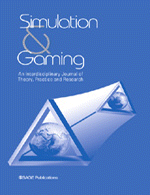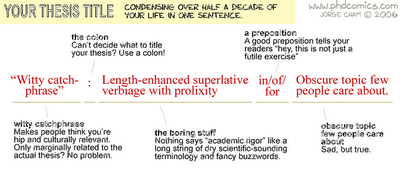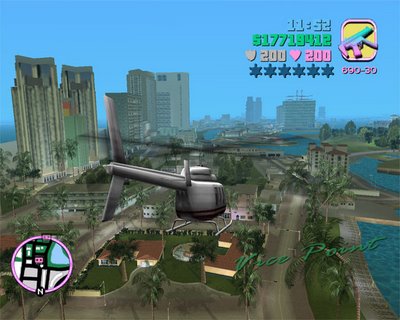Global gaming networks are heterogenous collectives of localized practices, not unified commercial products. Shifting the analysis of digital games to local specificities that build and perform the global and general, Gaming Rhythms employs ethnographic work conducted in Venezuela and Australia to account for the material experiences of actual game players.
Wednesday, November 29, 2006
Monday, October 30, 2006
Mo(ve)ments Conference Abstract
Everyday Empowerment? Videogames in the Developing World: A Situated Study of
The conference is subtitled 'Local, National and Global Carribean Popular Culture', as I recall Venezuela is on the Carribean so its vaguely relevant, and at least the conference is in Melbourne.
Posted by
Tom
at
9:27 am
0
comments
![]()
Monday, October 02, 2006
Burda: Research Proposal
Here is a copy of the research proposal I sent the Burda Centre, it was pretty rushed so it isn't as tight as I would have liked it to be.
Project Overview
The videogame industry is dominated by large media concerns like Sony, Microsoft, and Nintendo. Focused in
Background
Literature Review
Recent writing on videogames has emphasised the transformation that the growing importance of videogames has effected on both the cultural landscape and the traditional media industries (Ruggill et. al., 2004;). While the growth of the videogame industry has disrupted the typical dominance of the
Videogames are situated as a key part of participatory culture (Marshall, 2004; Cover, 2005). Participatory culture is characterised by a level of engagement with the media that shifts from consumption – whether configured as passive or active – to production (Jenkins, 2006). This phenomenon is closely associated with the increasing availability of digital media (Lister et. al., 2003). Studies focusing on the benefit to the videogames industry of content generated through videogame player’s production have determined that its contribution is worth hundreds of million dollars annually (Castronova, 2003 & 2006; Yee 2006).
This practice has been seized upon by the proponents of the creative industries as being the key to the development of videogames industries in smaller economies (Hartley, 2005; Jenkins, 2005). For example, in 2003 the Australia Council’s New Media Arts Board funded a project that involved making a ‘mod’ (the term for a computer file designed to modify certain aspects of a videogame) for the videogame Half-Life: Counter-Strike (Valve Software, 2003), the game while controversial was able to sustain Australian-based designers and generate Australian-themed content, that can be distributed freely at a global level, for a game that is popular on a global scale, without violating and property right of the original games developers’.
Another area where it is possible for smaller players to enter the game development industry is by developing games for mobile phones (Finn 2004, Kerr 2006). Games designed for mobile phones need to take into account the new context of consumption that the devices engender. As gaming becomes mobile it becomes more temporally bound as the practice must fit into small periods of time; also the visual design demands a simple approach due to the small size of the screens. This means that games for mobile phones can be both short and have simple graphics and still be successful. The use of JavaScript for mobile phone interfaces means that there is no problem of compatibility between different platforms and brands. This combined with the ease of distribution through digital networks suggests a model of game design that has a considerably lower capital threshold than the typical industry model.
Method
Based on contemporary scholarship on videogames in the field of Media and Communications there are four main approaches to the study of videogames: Industry studies (Kerr, 2006; Kline et. al. 2003); Textual Analysis (Bogost, 2006; Jull, 2005; King & Kryzwinska, 2006); Ethnographic studies (Castronova, 2006; Taylor, 2006); and Pedagogical studies (Gee, 2003). The concern of this project is with industry; however, in order to examine how participation in the industry may be distributed more evenly I will also be scrutinizing the practices of audiences (ethnography), and using textual analysis to see if there are particular genres of videogames that are more appropriate for alternative models of design and distribution. Kline et. al. (2003) remark that any study made of the videogame industry is incomplete without and understanding of the practices of play – that is the practices of the audience of videogames – and the objects that the industry produces, as texts. However, on the last point, the textual analysis of videogames, it is important to note that the current thinking in the field has moved away from regarding games as another kind of media text (e.g. Murray, 1997); and shifted to a notion of understanding gameplay (the interaction of game and player) as a dynamic operation (Galloway, 2006; Myers, 2003; Newman, 2004).
Proposed Research
This research will focus exploring alternative models for videogame development. This will focus on three main areas: the impact that new developments in technology are having on the industry; the role that new genres of videogames are having on the diversifying the market; and the practices of the audiences which can be harnessed by smaller companies. This will involve a three-pronged approach to research.
In the case of the technological developments in the industry, as well as conducting research from industry documents, I will make online interviews with game designers and distributors that are utilizing these new technologies. For this I hope to be able to take advantage of relations that I have developed with Paradox Interactive a Swedish game design company that has recently launched its own online game publishing and distribution system, and CipSoft GmbH, a German company that has been an innovative an popular producer of Massive Multiplayer Online Games and mobile phone games.
New genres of games which are diversifying the videogame market include newsgames, serious games, advergames and alternate reality games. I will make a survey of industry reports to gauge the impact of each of these genres on the videogame market, and make interviews with designers from the Uruguayan company Newsgaming, pioneers of the use of videogames for political advertising.
The final thread of the investigation centres on the practices of players. Here I will be examining general trends in the industry as they have responded to player demand, as well as the innovative practices of the audiences themselves. Here I will focus on content creation, the growing incorporation of players into technical roles in the game design process, and the use of gamers to maintain and organise ongoing gaming communities. By interviewing with twenty players from around the world involved in the industry at these levels I hope to demonstrate the key importance that these groups play in sustaining the industry now, and suggest how alternative models of production and distribution may ensure and constructively manage their contributions.
Contribution to Research
The key contribution of this research will be to explore how the power dynamics created by an uneven distribution of content creation may be overcome by looking at alternative practices in the margins of the game industry which can be nurtured at a local level but still have a global impact. This approach is also innovative because it combines industry analysis, with analysis of games and game genres, in the context of the practices of the audiences.
Research Plan
| 2006 | Research |
| March | Research on gaming technology; Conduct interviews with staff of Paradox Interactive |
| April | Research on gaming technology; Conduct Interviews with staff of CipSoft GmbH |
| May | Research on gaming technology; Progress report to Burda Centre |
| June | Research on Gaming Audiences; Conduct Interviews in |
| July | Research on Gaming Audiences; Conduct Interviews Online; write Report on Edutainment 2007 |
| August | Research on Gaming Audiences; Conduct Interviews Online; Progress report to Burda |
| September | Research on new game genres; Present Work at DiGRA 2007 Conference in Tokoyo; Fieldwork in |
| October | Research on new game genres; Prepare Publication; write Report on DiGRA 2007 |
| November | Research on new game genres; Final Report to Burda; Submit Publication |
Budget
| Item | Cost |
| Materials (Tapes, photocopying, games) | 1400 |
| Return Flight Melbourne-Hong Kong | 900 |
| Return Flight Melbourne-Tokoyo | 1850 |
| Return Flight Melbourne-Montevideo | 2500 |
| Per diem allowance (accommodation, transport and food) | 2400 (16 days) |
| Total | 905 |
The aim of this project is to produce useful information for policymakers regarding the funding and support of the videogames industry. In this regarding I will submit a final report on my research to the Burda centre in November 2007. Prior to this I will submit two short progress reports in May and August 2007. This final report will be approximately 60-80 pages in length, and I would enjoy the chance to come a present these findings in seminar form at the Burda Centre, if possible.
In June and September 2007, I will travel to
Finally, I will use the material from the project for an article to be published in a prestigious interdisciplinary Media and Communications journal (e.g. Media, Culture, and Society), to be submitted in November 2007.
Posted by
Tom
at
9:40 am
1 comments
![]()
Saturday, September 30, 2006
Finished the CSAA Paper
Wow, some serious work this past week and a virtual all-nighter last night (just 3:30am) and now is its done. Well I sent it to my sister for some editing, and then I'll look over it again tonight before I actually submit it.
Its so strange to actually make the deadline for something... ...whats happening to me?
Posted by
Tom
at
11:26 am
0
comments
![]()
Tuesday, September 19, 2006
Unaustralia Conference

So the annual Cultural Studies Association of Australasia Conference is coming soon in December. The theme is Unaustralia, and I managed to do a bit of a procrustean feat on one of my old research streams that I have been looking to publish. Basically, its going to be an update of the final chapter of my honors thesis, with current literature (its amazing how much stuff has come out on strategy games - and how much my research skills have improved), and refocused on Europa Universalis (Paradox Interactive, 2000) and Victoria: Empire Under the Sun (Paradox Interactice, 2002). The dissertation version used Civilization III and Medieval: Total War, both of which are getting a bit long in the tooth, and also importantly don't explicitly reference the Australian colonial period. In EU2 Australia is unclaimed by any European power, and its colonization can take place during the game, in Vicky South and East Australia are Bristish colonies but anything can happen, I've played games where the Netherlands colonized North and West Australia, and one where Britian traded Australia to Brazil for the Phillipines. Here is the abstract that got accepted:
Virtual Unaustralia: Videogames and
This has to be finnished by the end of the month, so I am starting my write up of the new draft featuring the Paradox Interactive games today.
Posted by
Tom
at
10:00 am
0
comments
![]()
Monday, September 18, 2006
Flux Conference Panel Proposal
Here is the proposal for a panel on Actor-Network-Theory that my buddies Bjorn and Michael and I have put together for the flux postgraduate conference run by the cinema studies department this November.
Panel: Assembling the ANT: Ventilators, Maps, Videogames
Machine Breaths
-
Locative media has routinely been understood through theories concentrated on spatial analysis and the virtual annotation of urban landscapes. Such discourses often rely on a utopian desire to recover stable relations and place-bound modes of community in a global era characterised by the flux of compressed networks of time-space. Paradoxically, these practices rely on the very technologies of reproduction and simulation that Andreas Huyssen understands as being ‘leading players in the morality play of memory.’
Analysis through Design: Examining the Technological and Social Actors in a Videogaming Ecology
-Thomas Apperley
Posted by
Tom
at
4:29 pm
0
comments
![]()
Mobile Media Abstract Accepted!
The organizers of Mobile Media: an international conference on social and cultural aspects of mobile phones, convergent media, and wireless technologies, Larissa Hjorth and Gerard Goggin have accepted my abstract to the conference. Good news for me, have to have a written version of the paper availible for refereeing by the 15/01/07, thats a long time away now.
Don't have much other information about whats going to happen, except for that its on the 02-04/07/07, and its in Sydney. The organizers say there's going to be a lot of people there from around the world so should be cool.
Posted by
Tom
at
2:35 pm
0
comments
![]()
Saturday, September 16, 2006
Videogames: Issues in Research and Learning

So in December 2005 and March 2006, the Sage Journal Simulation & Gaming published a two part special issue on videogames. Included was my article on Videogames and Genres, which appeared in the March 2006 issue (stoked!). Don't know why I haven't mentioned it until now, been out of blogging mode I guess. Anyhow sheck out their site and hopefully you can find out a way to download it legitimately (or just click the link on the bottom of the sidebar).
The editors describe my research: "Apperley examines the aesthetic components of video games, contrasting market-driven genres that pigeonhole video games into prior media genres versus genres based on visual aesthetic or narrative structure. His conclusions highlight the disassociation of video game play, content, and analysis from previously embedded conventions of market, culture and critique." Could not have put it better myself, I love it how some people can just explain to you what the hell you are doing, its like the whole situated play epiphany I had a few moments ago after I discovered what the rest of the world was calling the kind of research I do.
Bottom line for me is that genre is a useful was to explore the complex interrelation between the narrative, the representational and the ludic. That is not all that I think genre can do for Game Studies... ...but more on that later.
Anyway the article is still in the journals top-ten most downloaded (read) articles, at number nine after six months, it was number one from April-June, before slipping to number five and then 8. It has consistently been the most popular from the symposium issue. Hey I guess someone had to write an article about videogame genres didn't they?
Posted by
Tom
at
11:56 pm
0
comments
![]()
Situated Play - I'm Part of a Meme
It turns out that other scholars out there, namely those that select the topic for the 2007 DiGRA conference are also interested in the context(s) in which gaming takes place, however, they called this 'Situated Gaming'. Nice for me, a new key word and a sense of validation in the value of my project and the direction its been taking over the write-up period.
Starting to think maybe I should join them, so many things to spend money on. Darshana went to the conference they had last year in Vancover and said it was pretty cool, I think I was in Venezuela at the time, or maybe stuck in Melbourne teaching.
Posted by
Tom
at
11:28 pm
0
comments
![]()
Urban Hellraisers in Vice City
Posted by
Tom
at
12:33 am
1 comments
![]()
Thursday, September 14, 2006
MU: Online v Nintendo & City of Heros v Marvel

I was just looking over some of my fieldwork material today and noticed a few references to Mu: Online. I had seen this game being played a lot - along with Tibia, another free MMORPG - during August-October 2004, but hadn't really noticed any significant play of it when I was in Caracas from March-July 2005. Anyway I was looking over the games site and saw that it had switched to a mixed free/pay service (pay service is called premium) this April. This meant that free players would be limited to four of the game-worlds, and to 60th level, while pay players would get unlimited access. The pay only worlds were also promoted as being bug free (bugs and third-party mods plagued MU: Online back when I was doing my research on it).
So I was looking around on the internet for some news on what happened with MU, because the buzz around the game was pretty big because of the huge size of its regular community (I use community here in the loose sense - but lets say at least it had a hell of a lot of players) all I could find was wikipedia claiming that it was sold by webzen (the Korean developers) to K2 (the current owners) for 2,000,000USD.
During my search I also discovered that Nintendo had been on webzen's case for allowing (out of 1,000s of possibile combinations) characters to be customized that looked like Link (of Zelda fame), in one of the new games it has been beta-testing, S.U.N. (Soul of the Ultimate Nation). Nintendo didn't sue just issued a stern warning. Now apparently this issue has cropped up in the past, according to Gamespot News, with players in City of Heros customizing their characters to closely resemble various Marvel favorates. The dispute between Marvel and City of Heros went from November 2004-December 2005, and resulted in an undisclosed settlement payment to Marvel. Wired News states:
"Considering that defendants own no comic characters themselves, it stands to reason that the comic books to which they refer are those that depict the characters of Marvel and others," wrote Marvel's attorneys in the complaint. "Defendants' Creation Engine facilitates and, indeed, encourages players to create and utilize heroes that are nearly identical in name, appearance and characteristics to characters belonging to Marvel."
The Story is also covered by USA Today.
What I'm wondering is what is the story with the Habbo Hotel game's jedi/sith roleplaying factions?
Posted by
Tom
at
10:19 pm
0
comments
![]()
Monday, September 11, 2006
Mobile Media
Stayed up late last night writing this abstract for the Mobile Media conference in Sydney next year. Was pretty interesting doing the research. Mobile gaming has a whole lot of interesting issues... ...and its pretty obvious that those who have waxing lyrical about this in various forums I have attended have just read 'Smart Mobs'.
Anyway I found the summary of the issues by Mark Finn in AJETS to be pretty sweet, and Aphra Kerr's book had some good stats, I'll have to get around to reading it soon.
Here is the abstract (its over 100 words too long :$) :
Games without Borders: Globalization, Gaming and Mobility in
Using fieldwork data from ethnographic research conducted between March and July 2005, this paper will examine the impact of mobile games on the videogames industry and audiences in
Kerr and Flynn (2003) argue that the structure of the global videogames industry is such that it potentially prohibits many small countries from developing this sector.
Hall (2005) describes the impact that mobile gaming has had on videogame content. Play takes place within a particular context defined by time and space, the stability of this model is challenged by mobile games, which can be played in numerous contexts. Further to Hall’s understanding of context I will argue, based on my own experiences and observations, that culture and social bonds have a particular impact on context. Content, as in the type of game played has a strong correlation to these contexts. Particular contexts suit particular games (content), and vice versa, this explaining the ubiquity of certain games in
Posted by
Tom
at
9:26 am
0
comments
![]()
Thursday, July 13, 2006
Its been a long time....
Wow, such a long time since I have posted. Been so busy, but now its time to finnish this thing. Working on a chapter at the moment. Due in just 7 months, its gonna be crazy over the next few months as I type away.
Posted by
Tom
at
8:50 pm
1 comments
![]()
Wednesday, February 01, 2006
New Project
A new research team made up of myself Aravindhan Kinniah, and Michael Dieter have begun the process of writing up the data from a project started in July 2005 on World of Warcraft players in Melbourne Australia.
Posted by
Tom
at
10:08 am
2
comments
![]()
Friday, January 06, 2006
New Head of Program
I was down at the pub last night having a beer with a couple of colleagues and as I walked out I happened to bump into Sean Cubitt. Now that was unexpected, he should be in New Zealand! Well it transpires that he will become the new head of the Media and Communications Program at the University of Melbourne. So a new year and a bit of a change here at the rather strange institution that is the media and communications program. Good for me.
But well I hope things stay cool at the Screen Media Department at the University of Waikato (Sean's old haunt). It was nice to know that there was a University somewhere in Australasia that was keeping it real with Games Studies. Their media lab was cool, and they were pumping out the old research.
Posted by
Tom
at
10:41 am
0
comments
![]()
Thursday, January 05, 2006
Thinking About My Dissertation
I've been having a hard think about my dissertation. I want to get it out of the way (that's what I've been advised by a few people). So I've been planning it all out.... even though I haven't quite finished the old fieldwork. End result, is that my old chapter one, the one I posted here last January is no more, no good, dog food or something. So someone please tell me what to do with it....
Posted by
Tom
at
8:48 pm
0
comments
![]()
About Me
- Tom
- This blog started as a PhD blog, for my project 'Global Rhythms: Video games and the Transformation of Play'. It finally become a book. This is a "historic" record of the trials a tribulations.


